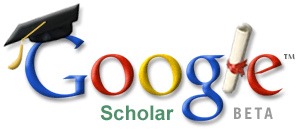Perhaps the most important aspect of Library 2.0 is connecting. John Seely Brown, Chief Scientist at Xerox and director of its Palo Alto Research Center, demonstrated the importance of this aspect through the history of electricity. Although Michael Faraday’s small generator produced electricity in 1831, an entire generation passed before an industrial version of Faraday’s generator was built. It took another 25 years for electricity to find its way to power companies, neighborhood wiring, and appliances. This was an extremely long process for one idea to actually be put to use in daily life. According to Brown, “with the internet that we have today, we do not need to wait generations for an idea to develop into reality. Ideas can spread rapidly, inventors can catch the attention of sponsors and their vision can become a reality much more quickly.” This spread of ideas is generated by connecting to other researchers though the plethora of digital tools available to nearly every researcher on the planet. By contacting other researchers and experts, we can share insights and achieve goals much more quickly than ever before.
It is common to research a topic by looking up articles and news reports from credible websites and databases. While this is a wonderful start, research should not begin and end with sorting through articles to paraphrase on a report or a business proposal. Perhaps the most effective way to research is to find the experts in the desired topic and use them to find the best information without sorting through thousands of articles on a database. One may accomplish this process in several ways.
First, a researcher might search a topic on a database of scholarly articles or look at bibliographies of several works on the subject in order to discover the experts on the subject.
Next, one might find the resources the expert used or is interested in through social bookmarking, Google Plus, Facebook, blogs, or other Web 2.0 tools. As previously discussed, social bookmarking sites allow you to see links used by other researchers for any desired field. By finding the links marked by an expert, it becomes much easier to find more information on a research topic. Experts can usually be found on Google Plus or Facebook as well. These professionals are extremely excited by their area of interest and are likely to post information about it frequently. Some may even create a Facebook page entirely on their topic of interest. Their profile pages can contain a wealth of knowledge for any researcher interested in their work. Another useful tool to find information is to find an expert’s blog. Blogs may not be purely academic, but they will probably contain useful links for more information on their topic of interest.
While this may be very useful to any researcher, finding information is only the shallow end of connecting. In order to truly make research meaningful, one must use these digital tools to contact the experts after reading their material. This process develops an understanding network building and will prove to be a valuable research tool in any type of research as well as the professional workplace. For any researcher who is lacking interest or motivation in their work, connecting to other experts is sure to inspire greater interest in the topic and augment motivation to effectively find the best sources possible and create truly remarkable work. Communicating with experts in the field makes research a far more worthwhile and memorable experience than it might otherwise have been and allows those experts to then comment and improve the researcher’s work.
Although connecting with an expert may seem daunting to the average researcher, current digital tools make it relatively easy to contact experts on any subject. These tools also create much easier methods for experts to respond to requests. For the many experts who teach or conduct research at universities, contact information can be found through university directories. Once an expert’s google plus profile is found, email options are usually provided. It is also relatively easy to comment on Google plus or any facebook page. With properly expressed interest, a comment from a researcher usually elicits a response from the expert in question. Conversation can also be sparked through comments on an expert’s blog.
Researchers could also visit an office which might have more information on the subject. For example, in order to find more information on how technology has influenced education, a researcher could visit any school office and ask what new forms of technology the school had implemented and how it had influenced student learning. Interviews are generally considered scholarly sources and can generally be cited in research papers and other published works. If distance poses a problem, interviews via phone, video conferencing, or video can be effective as well.








